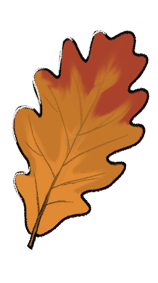Ethnobotany is the study of plants as they relate to or are used by specific cultures. Examples may include use as food or medicine, or for spiritual or agricultural purposes.
More information
More information
Related categories 5
Sites 19
An open access, online journal of ethnosciences. Includes topics in medicinal and cultural uses of plants.
A searchable and browsable medicinal plant database for uses of traditional veterinarian and human medicines in Africa.
Brief biography of the doctor for whom psilocybe weilii was named. Includes comments on his research and data on the chemical components of the mushroom.
Information from Wikipedia on this branch of botany that studies the relationships that exist between people and plants.
A free online journal of current research in ethnobotany.
Information on the use of herbs and other natural products in biochemistry, pharmacology, and traditional medicine.
FOIBIS is a searchable database of more than 4700 species, including vascular plants, bryophytes and lichens. It includes information on ethnobotanical uses.
Description of plant usage by the San people in West Bushmanland (Namibia) for food, medicine, tools, and decoration.
The Journal of Ethnopharmacology, which publishes papers on medicinal and other useful indigenous plants as well as their bioactive compounds.
First published in 1931 by Mrs. M. Grieve, the online version of this book contains medicinal, culinary, cosmetic and economic properties, cultivation and folk-lore of herbs.
The ethnobotanical work of Dr. Deepak Acharya, including full text of papers and pictures of Patalkot valley, India.
The People and Plants Initiative, involving WWF, UNESCO, and Kew Gardens, working on applied research projects, community workshops, exchanges and training courses with young ethnobotanists.
Resource centre for edible, medicinal, and other useful plants.
Materia medica of the psychoactive mushroom used by natives of subtropical regions.
Brief history of Parker's role in the spread of Christian peyotism. Includes plant description and recommended reading list.
Describes current research, including ethnobotany, medicinal botany, traditional uses of plants, and bioprospecting. Also: research policy, discoveries, DNA-banking, Chatham Fellowship, staff, and links.
Fosters scientific research, education, and related activities on the past, present, and future uses of plants, and the relationship between plants and people.
A nonprofit professional organization dedicated to the interdisciplinary study of the relationships of plants and animals with human cultures worldwide.
Searchable list of plants from the Amazon rainforest, by common or botanical name, action, ailment, properties or ethnic uses.
A nonprofit professional organization dedicated to the interdisciplinary study of the relationships of plants and animals with human cultures worldwide.
Fosters scientific research, education, and related activities on the past, present, and future uses of plants, and the relationship between plants and people.
The People and Plants Initiative, involving WWF, UNESCO, and Kew Gardens, working on applied research projects, community workshops, exchanges and training courses with young ethnobotanists.
A searchable and browsable medicinal plant database for uses of traditional veterinarian and human medicines in Africa.
The Journal of Ethnopharmacology, which publishes papers on medicinal and other useful indigenous plants as well as their bioactive compounds.
An open access, online journal of ethnosciences. Includes topics in medicinal and cultural uses of plants.
First published in 1931 by Mrs. M. Grieve, the online version of this book contains medicinal, culinary, cosmetic and economic properties, cultivation and folk-lore of herbs.
Information from Wikipedia on this branch of botany that studies the relationships that exist between people and plants.
A free online journal of current research in ethnobotany.
Resource centre for edible, medicinal, and other useful plants.
FOIBIS is a searchable database of more than 4700 species, including vascular plants, bryophytes and lichens. It includes information on ethnobotanical uses.
Describes current research, including ethnobotany, medicinal botany, traditional uses of plants, and bioprospecting. Also: research policy, discoveries, DNA-banking, Chatham Fellowship, staff, and links.
The ethnobotanical work of Dr. Deepak Acharya, including full text of papers and pictures of Patalkot valley, India.
Brief history of Parker's role in the spread of Christian peyotism. Includes plant description and recommended reading list.
Materia medica of the psychoactive mushroom used by natives of subtropical regions.
Brief biography of the doctor for whom psilocybe weilii was named. Includes comments on his research and data on the chemical components of the mushroom.
Searchable list of plants from the Amazon rainforest, by common or botanical name, action, ailment, properties or ethnic uses.
Description of plant usage by the San people in West Bushmanland (Namibia) for food, medicine, tools, and decoration.
Information on the use of herbs and other natural products in biochemistry, pharmacology, and traditional medicine.

Last update:
January 20, 2025 at 7:34:15 UTC

Check out
Society: Organizations: Nonprofit Resources: Research on Nonprofits
- Recently edited by lisagirl
- Recently edited by lisagirl